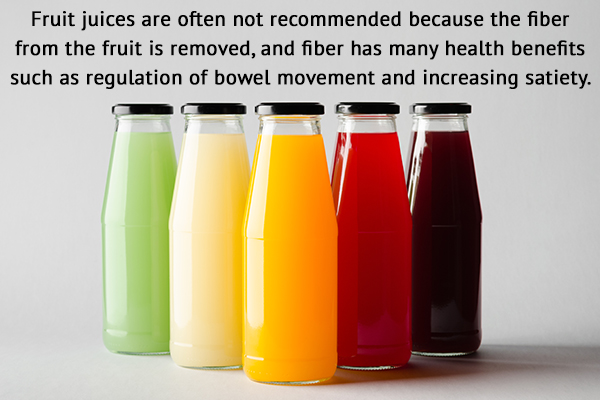In this article:
Poor nutrition can set back a child’s physical, neurological, and psychological growth to a great degree, and these developmental problems may carry well into his/her adulthood. It is therefore very important to meet your child’s nutritional requirements through a diverse but well-balanced diet.

Many children are picky eaters, which can make this a rather difficult task, but you must be patient and persistent with them. The eating habits you pick up during childhood often stick with you throughout your life, which is why this is the right time to mold your kid’s dietary choices.
Eating healthy from a young age helps one stay in shape and avoids chronic ailments as one grows older. Apply this rule to your child as well.
Foods Not Recommended to Children
No food can be classified as “bad” for children unless they are allergic or sensitive to the said food. During the first few years of life, it is essential to expose children to different foods with different textures and tastes. This way, the child learns to be a competent eater and grows up viewing food as food and not associating food as good or bad.
Some foods are more nutrient-dense than others, like an apple over a cookie, but food should be viewed emotionally the same. If you take some foods away from children, they will associate it as bad and probably want it more.
Here’s how you can add nutritional value to some common foods that are otherwise considered “unhealthy” for children:
1. Synthetic fruit juices

Fruit juices are a great way to get in the fruit serving for the day. The trick is to buy 100% fruit juices with very little added sugar.
Fruit juices are often not recommended because the fiber from the fruit is removed, and fiber has many health benefits, such as regulation of bowel movement and increasing satiety.
If the child is getting fiber from other sources, such as whole grains, vegetables, and legumes, then 4 oz of fruit juice is okay. However, whole fruits are the best options.
2. Hot dogs
Hot dogs are a kid favorite and an adult favorite as well.
You don’t want to eliminate this food if the child enjoys it, but you can make it more nutrient dense, such as serving it with some vegetables and dip, buying 4-inch hot dogs instead of the regular size, and serving it on a whole-wheat bun. This way, the child is getting their protein and carbohydrates but also vegetables.
The best strategy is to think of ways to add to the meal and make it more exciting than removing or restricting.
3. Sugary drinks
Sugary drinks are full of added sugar that children and most adults don’t need because they often add calories but not nutrients.
The American Academy of Pediatrics (1) indicated that American children consume 17% of calories from added sugar, mostly from sugary drinks. The dietary guidelines recommend less than 10% of calories from sugar. Excess intake of added sugar can lead to some diseases, including obesity and type 2 diabetes.
It won’t be appropriate to eliminate sugary drinks from the diet but rather limit how often children drink them. Sugary drinks can be replaced with water, fruit smoothies, and homemade flavored water.
4. Hard candies and lollipops

Similar to sugary drinks, hard candies and lollipops are full of sugar, added sugar, and empty calories with no nutritional value. They can also cause toothaches and decay, (2) but they are so delicious.
There is a place and time for candy, and parents can control how often children eat candy rather than eliminate them. Fruits such as strawberries, dates, grapes, and cherries are great alternatives to sweets as they provide sweetness and nutrition.
5. Refined packaged pasta
Not everyone has the time or skill to make pasta, so ready-to-eat packaged pasta makes for a convenient meal. But it may not be the healthiest. There are basically two types of packaged pasta available in grocery stores, refined and whole grain.
As the name suggests, refined pasta is made of refined or simple carbs that add significantly to calorie intake while running low on fiber. Thus, refined pasta has low nutritional and high calorific value, which makes them bad for cardiovascular and overall health.
Whole-grain pasta, on the other hand, is full of complex carbohydrates that take longer to digest than simple carbs. Thus, complex carbs release glucose gradually and provide lasting energy, as opposed to simple carbs that get digested quickly and provide a sudden but short-lived burst of energy. Plus, the whole grains used for making this variety of pasta are enriched with fiber, which facilitates better digestion and keeps you full for longer.
So, it’s best to consume whole-grain pasta as part of an overall well-balanced diet, while avoiding the refined varieties. You can serve it with some tomato sauce, meatballs, and a side of mixed vegetables.
6. Microwave popcorn

Popcorn is a great snack and a good complex carbohydrate, but not all popcorn is created equal. Most microwavable popcorn is drenched in butter and salt and adds more fat and sodium than needed.
A good strategy is to buy popcorn that doesn’t have a lot of butter and salt and to season it yourself. You can be as creative as you want and get the kids involved. You can make a popcorn trail mix, seasoned popcorn, etc.
7. Honey
Honey isn’t safe for children under the age of 1 because it may be contaminated with Clostridium, bacteria that live in soil and dust and cause infant botulism. (3) They also can contaminate other foods.
After the age of 1, a tablespoon of honey on toast is okay. Honey is rich in antioxidants, vitamins, and minerals.
8. Sweetened breakfast cereals
Breakfast cereals are great but can have added sugar. A good strategy is to buy healthier cereals that provide nutrients and add a limited amount of sugar to improve the taste instead of buying sweetened breakfast cereal.
You want healthy and delicious meals for your children, not just healthy.
Nutritional Needs of a One-Year-Old
Babies around 1-year-old have almost a strict diet. According to the World Health Organization and UNICEF, (4) babies should be exclusively breastfed for 6 months, introduced solids at 6 months, and continued to be breastfed until 2 years of age.
Breastfeeding can help create a bond between the mother and the child. It can provide the baby with protection from gastrointestinal diseases. It provides all the nutrition and hydration the baby needs to grow. Babies should not be given whole cow’s milk in the first year of life for the same reasons.
Simple Ways to Help Your Child Eat Better

Here are some tips to inculcate healthy eating habits in children without much opposition from their side:
- The best way to make children eat more healthy food is to model that behavior and eat healthy foods yourself. (5) Teach them by example.
- Get children involved when cooking because children are more likely to eat the food if they helped in making it.
- Family meals are necessary because it creates a bonding moment for children and the family. The children are sitting in one place and can eat without running around. (6)
- Don’t be afraid of carbohydrates and fats because healthy food needs to taste good, and if you don’t eat bland food, why expect the children to eat bland food?
- Don’t pressure children to eat healthy foods; keep introducing the food, and one day they’ll eat it.
- Try not to use good food, bad food, or treats around children because it can create a wrong impression of the food in question. The biggest thing is introducing children to different foods in a neutral way, which means you shouldn’t attach any positive or negative value judgment to any food. The child should identify the food as a food, rather than as a good or bad thing. For instance, they should view a carrot as a carrot and not as good food.
- Try to cook the food in different ways to create variety.
- Trust that your child knows their stomach and when they are full. This will help them learn to trust their hunger cues and not overeat or eat to please you.
- Teaching children to eat healthily is a long process but trust yourself and your child.
- If you have questions, ask your pediatrician and dietitian.
Final Word
Children should eat a well-balanced diet with protein, carbohydrates, healthy fats, dairy, vitamins such as vitamin C, minerals such as iron, etc. This way, they are getting all the nutrition their growing bodies need and are not malnourished.
Remember children are born neutral to food and adopt their parents eating habits, so you need to be mindful of what you say and do around them.
- Was this article helpful?
- YES, THANKS!NOT REALLY


